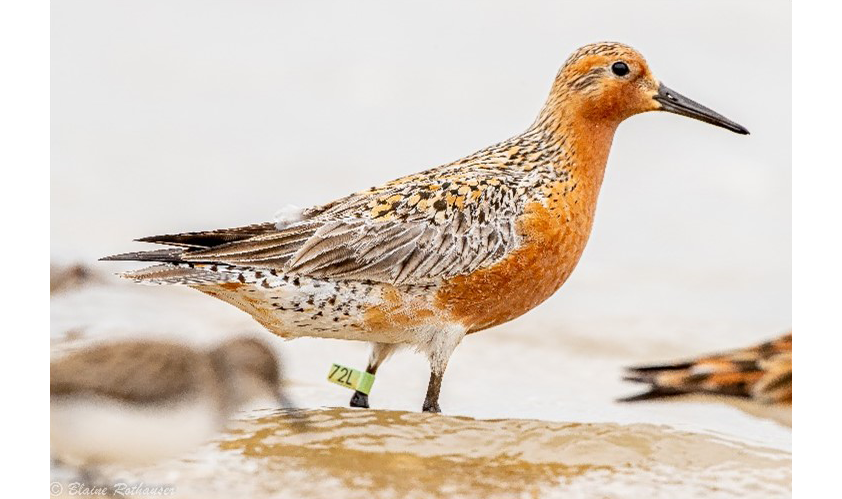3.7 FEDERAL AND STATE-LISTED RARE, THREATENED, AND ENDANGERED SPECIES
- 3.7.1 Rufa Red Knot (Calidris Canutus Rufa) - Federally Threatened
- 3.7.2 Northern Long-Eared Bat (Myotis Septentrionalis) - Federally Threatened
- 3.7.3 American Bittern (Botaurus Lentiginosus) - State Endangered
- 3.7.4 Least Bittern (Ixobrychus Exilis) - State Endangered
- 3.7.5 Northern Harrier (Circus Cyaneus) - State Threatened
- 3.7.6 Diamondback Terrapin (Malaclemys Terrapin) - State Threatened
- 3.7.7 Eastern Box Turtle (Terrapene c. Carolina) - State Species of Special Concern
- 3.7.8 Water-Willow Stem Borer (Papaipema Sulphurata) - State Threatened
A Biological Evaluation Form submitted to the U.S. Fish & Wildlife Service reported that this migratory bird is unlikely to be adversely affected by the Herring River Restoration Project.
A Verification letter for the Herring River Restoration submitted to the New England Ecological Services Field Office of the U.S. Fish & Wildlife Service reported that the Herring River Restoration Project has not determined that it will have "no effect" on the northern long-eared bat. It further reported that the project will involve tree removal but that zero "acres of forest conversion [will take place] from April 1 to October 31." This explains the newspaper account of the clear-cutting trees in the Duck Harbor basin reporting that "work at Duck Harbor began in late January and will end on April 15 when the endangered Northern long-eared bat returns to the area from winter hibernation."
3.8 TERRESTRIAL WILDLIFE
|
3.8.1 Birds |

|
|---|---|
|
3.8.2 Mammals |

|
|
3.8.3 Reptiles and Amphibians |

|
Source: Herring River Restoration Project Environmental Impact Report
Top of page